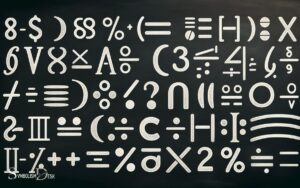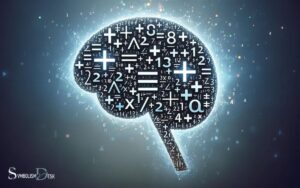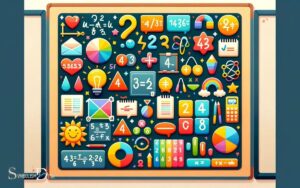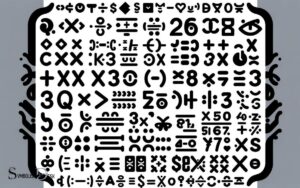How to Type Math Symbols in Latex? Explain!
To type math symbols in LaTeX, you first need to enter math mode by using the dollar signs $...$ for inline math or \[...\] for displayed equations.
Then, you can use backslash \ followed by the name of the symbol. For example, \alpha yields the Greek letter alpha (α), and \sum creates the summation symbol (∑).
For fractions, use \frac{numerator}{denominator}. Superscripts and subscripts are achieved with ^ and _ respectively.
LaTeX is widely used for typesetting scientific and mathematical documents due to its powerful handling of formulas and mathematical symbols.
Here are some common math symbols and how to type them in LaTeX:
\alpha, \beta, \gamma for α, β, γ, respectively.<, >, \leq, \geq for <, >, ≤, ≥, respectively.+, -, =, * for basic arithmetic, and \times, \div for ×, ÷.\in, \subset, \subseteq, \emptyset for ∈, ⊂, ⊆, ∅.\infty for infinity (∞), `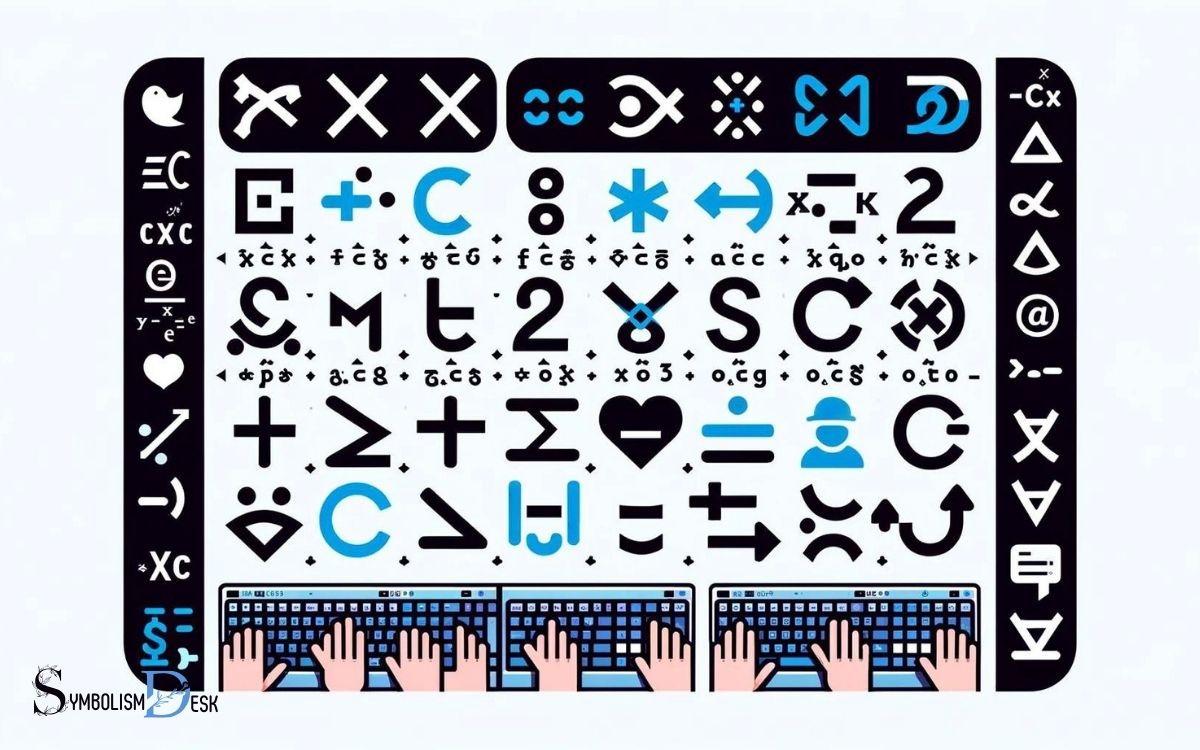
Key Takeaway
+, , , /, =, \\alpha, eta, \\gamma, and \\delta.\\infty), partial derivative (\\partial), summation symbol (\\sum), integral symbol (\\int), and not equal to (eq) can be easily inserted using LaTeX math symbols.\\pm), curly braces (\\{ \\}), less than or equal to (\\leq), greater than or equal to (\\geq), and right arrow (\\rightarrow) can be used in LaTeX math symbols.LaTeX Math Symbols Command Reference Table
| Command | Symbol | Description |
|---|---|---|
| \pm | ± | Plus-minus sign |
| imes | × | Multiplication sign |
| \div | ÷ | Division sign |
| \{ \} | { } | Curly braces |
| \leq | ≤ | Less than or equal to |
| \geq | ≥ | Greater than or equal to |
| eq | ≠ | Not equal to |
| \approx | ≈ | Approximately equal to |
| \rightarrow | → | Right arrow |
| \leftarrow | ← | Left arrow |
| \in | ∈ | Element of |
| otin | ∉ | Not an element of |
| \subset | ⊂ | Subset of |
| \supset | ⊃ | Superset of |
| \subseteq | ⊆ | Subset of or equal to |
| \supseteq | ⊇ | Superset of or equal to |
| orall | ∀ | For all |
| \exists | ∃ | There exists |
| exists | ∄ | There does not exist |
| \emptyset | ∅ | Empty set |
| abla | ∇ | Nabla or del operator |
| \angle | ∠ | Angle |
| \perp | ⊥ | Perpendicular |
| \parallel | ∥ | Parallel |
Common Math Symbols in LaTeX
The use of common math symbols in LaTeX is essential for accurately representing mathematical expressions in academic and technical documents.
LaTeX provides a wide range of symbols such as addition (+), subtraction (-), multiplication (× or ), division (÷ or /), inequality symbols (<, >, ≤, ≥), and Greek letters (α, β, γ) among others.
These symbols are crucial for conveying complex mathematical equations and notations with precision and clarity.
When composing academic papers, research articles, or technical reports that involve mathematical content, mastering the use of these common math symbols in LaTeX is indispensable.
Understanding the syntax and proper usage of these symbols ensures that mathematical expressions are correctly formatted and effectively communicated in the document, enhancing its overall professionalism and readability.
Basic Math Symbol Formatting
Having established the importance of common math symbols in LaTeX for accurately representing mathematical expressions, it is essential to delve into the specifics of basic math symbol formatting.
Basic math symbol formatting in LaTeX involves using commands to display symbols and equations. Below is a table demonstrating some commonly used basic math symbols and their corresponding LaTeX commands:
Understanding these basic LaTeX commands for math symbols is essential for effectively formatting mathematical expressions in documents.
With this knowledge, users can confidently create professional-looking mathematical documents with ease.
Greek Letters and Special Symbols
Greek letters and special symbols play a pivotal role in mathematical notation and can be effectively rendered in LaTeX using specific commands. When typing mathematical equations, it’s essential to accurately represent these symbols to convey the intended meaning.
In LaTeX, Greek letters and special symbols are accessed through specific commands, allowing for precise and professional-looking mathematical notation.
Here are three key points to consider when working with Greek letters and special symbols in LaTeX:
- Clarity: Utilizing the correct commands ensures that Greek letters and special symbols are displayed clearly and unambiguously in mathematical expressions.
- Consistency: LaTeX provides a standardized way of incorporating Greek letters and special symbols, promoting consistency and uniformity across mathematical documents.
- Professionalism: By employing LaTeX commands for Greek letters and special symbols, the resulting mathematical notation maintains a high level of professionalism and accuracy.
Advanced Math Symbol Techniques
The advanced math symbol techniques encompass complex symbol combinations, integration and summation symbols, and customizing symbol appearance.
These techniques allow for the creation of intricate mathematical expressions and equations in LaTeX, providing a comprehensive toolset for expressing complex mathematical concepts.
Understanding and utilizing these advanced techniques can greatly enhance the clarity and precision of mathematical notation in academic and professional documents.
Complex Symbol Combinations
To achieve complex symbol combinations in Latex, one must master the use of advanced math symbol techniques. This involves understanding how to combine different symbols to represent complex mathematical expressions accurately.
Here are some techniques to help you achieve this mastery:
- Utilize nested commands to combine multiple symbols and create intricate mathematical expressions.
- Familiarize yourself with the use of brackets and parentheses to control the size and spacing of complex symbol combinations.
- Experiment with various font styles and sizes to ensure that the combined symbols are visually cohesive and easy to comprehend.
Mastering these advanced techniques will empower you to accurately convey complex mathematical concepts using Latex.
Integration and Summation Symbols
Exploring the integration and summation symbols in Latex involves mastering advanced math symbol techniques to accurately represent complex mathematical operations.
The ∫ symbol is used to denote integration, while the ∑ symbol represents summation. In Latex, these symbols can be customized to display in various forms to suit specific mathematical notations.
When using integration and summation symbols, it’s crucial to understand their proper implementation within mathematical expressions. For example, using subscripts and superscripts to denote limits of integration or summation is essential for clarity and precision.
Additionally, knowing how to adjust the size and positioning of these symbols in different mathematical contexts is important for creating professional-looking documents.
Mastering these advanced techniques will allow for the accurate representation of complex mathematical operations in Latex. Moving forward, let’s delve into the section on customizing symbol appearance.
Customizing Symbol Appearance
Within Latex, advanced math symbol techniques allow for the precise customization of symbol appearance. This level of customization can greatly enhance the visual appeal and clarity of mathematical expressions.
Here are three key ways in which advanced math symbol techniques can be utilized to elevate the appearance of math symbols:
- Fine-tuning size and positioning: Adjusting the size and positioning of symbols to achieve optimal visual balance.
- Color and font manipulation: Utilizing color and font variations to emphasize or differentiate specific symbols within mathematical expressions.
- Creating custom symbols: Designing and implementing custom symbols to cater to specific stylistic or notational preferences.
Math Symbol Packages and Libraries
When incorporating math symbols in Latex, utilizing specialized packages and libraries is essential for efficient and accurate formatting.
These packages provide a wide range of mathematical symbols, allowing users to access a comprehensive set of symbols beyond the basic ones provided by Latex.
Some popular math symbol packages include “amsmath,” which offers advanced formatting options and symbols, and “amssymb,” which provides additional mathematical symbols.
The “unicode-math” package is another powerful tool that allows the use of Unicode input for mathematical symbols.
Additionally, the “mathtools” package extends the functionality of “amsmath” and offers further enhancements.
By leveraging these packages and libraries, users can streamline the process of typing math symbols in Latex and ensure the correct rendering of complex mathematical notation.
Best Practices for Typing Math Symbols
The best practice for typing math symbols in Latex involves utilizing a consistent and organized approach to notation and formatting.
To achieve this, consider the following best practices:
- Use Descriptive Variable Names: When typing mathematical expressions, use descriptive variable names to enhance readability and understanding.
- Leverage Latex Macros: Create and utilize Latex macros for frequently used symbols or complex equations to streamline the typing process and ensure consistency.
- Employ Proper Spacing: Pay attention to spacing around mathematical operators and symbols to ensure clarity and avoid ambiguity in the resulting documents.
Conclusion
In the world of LaTeX, typing math symbols is like creating a beautiful mosaic with intricate pieces coming together to form a cohesive and meaningful whole. A deep understanding of the different math symbols and their corresponding LaTeX commands is essential for accurately expressing mathematical concepts in documents. For those new to LaTeX and in need of guidance on typing math symbols, the “Chromebook math symbols tutorial” is a valuable resource that provides step-by-step instructions and examples for creating complex mathematical equations within LaTeX documents. With the help of this tutorial, users can quickly learn how to use LaTeX to accurately and effectively communicate mathematical ideas.
With an understanding of common math symbols, basic formatting techniques, and advanced symbol techniques, coupled with the use of math symbol packages and libraries, one can create visually stunning and mathematically accurate documents.
Mastering the art of typing math symbols in LaTeX opens up a world of possibilities for mathematical expression.

